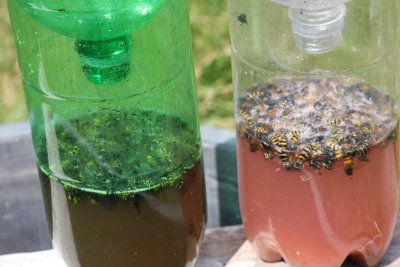- Joined
- May 5, 2013
- Messages
- 986
- Reaction score
- 0
- Location
- North London
- Hive Type
- National
- Number of Hives
- 30+
After my inspection this evening I noticed a number of wasps (the smaller british ones) flying around below my hive. Saw one attacking a bee on the floor but wasn't sure if this was one that was on its last legs anyway (I killed the wasp!) I was wondering if people see many wasps around their hives and whether they are a problem or if the bees take them out? My hive are quite strong. Any advice on getting rid of the wasps or should I just not worry about it?
Ta
Ta





















































 it works really well. Not sure if a bottle with a hole in would work? By cutting the bottle in half the silly wasps can't work out how to fly back out
it works really well. Not sure if a bottle with a hole in would work? By cutting the bottle in half the silly wasps can't work out how to fly back out 
